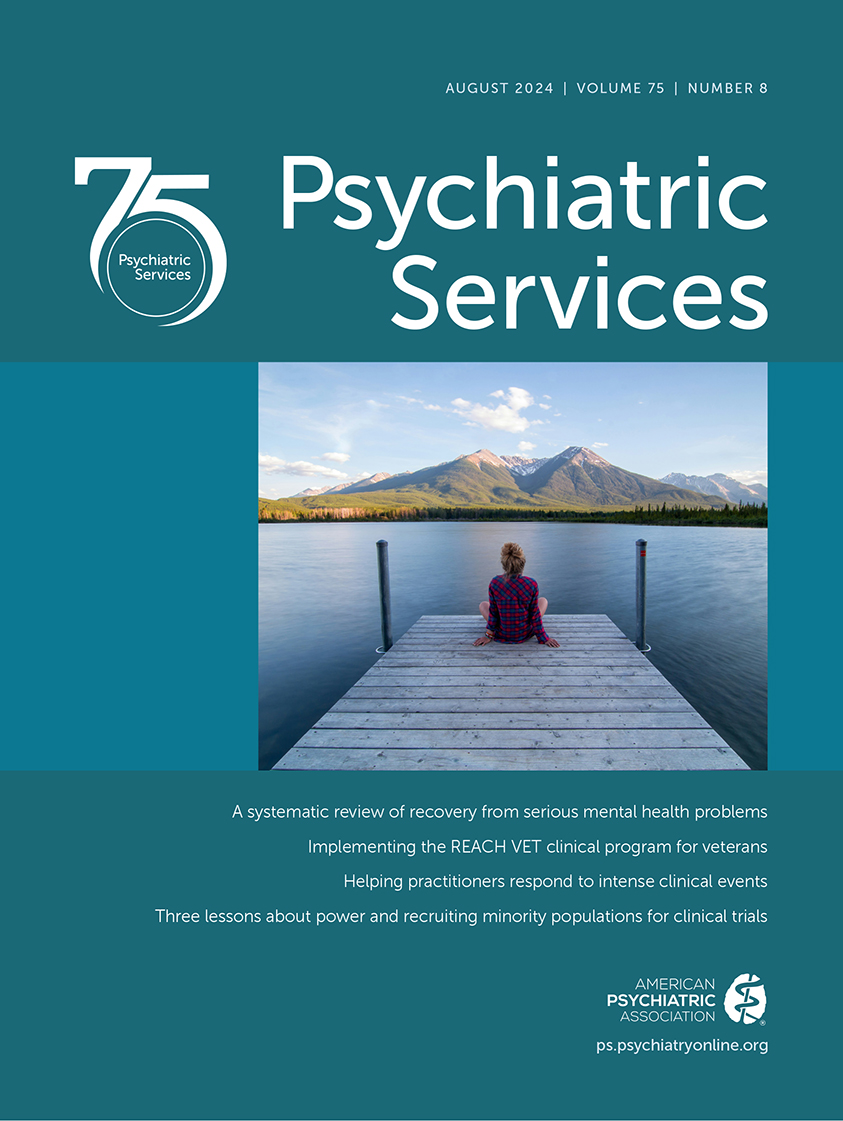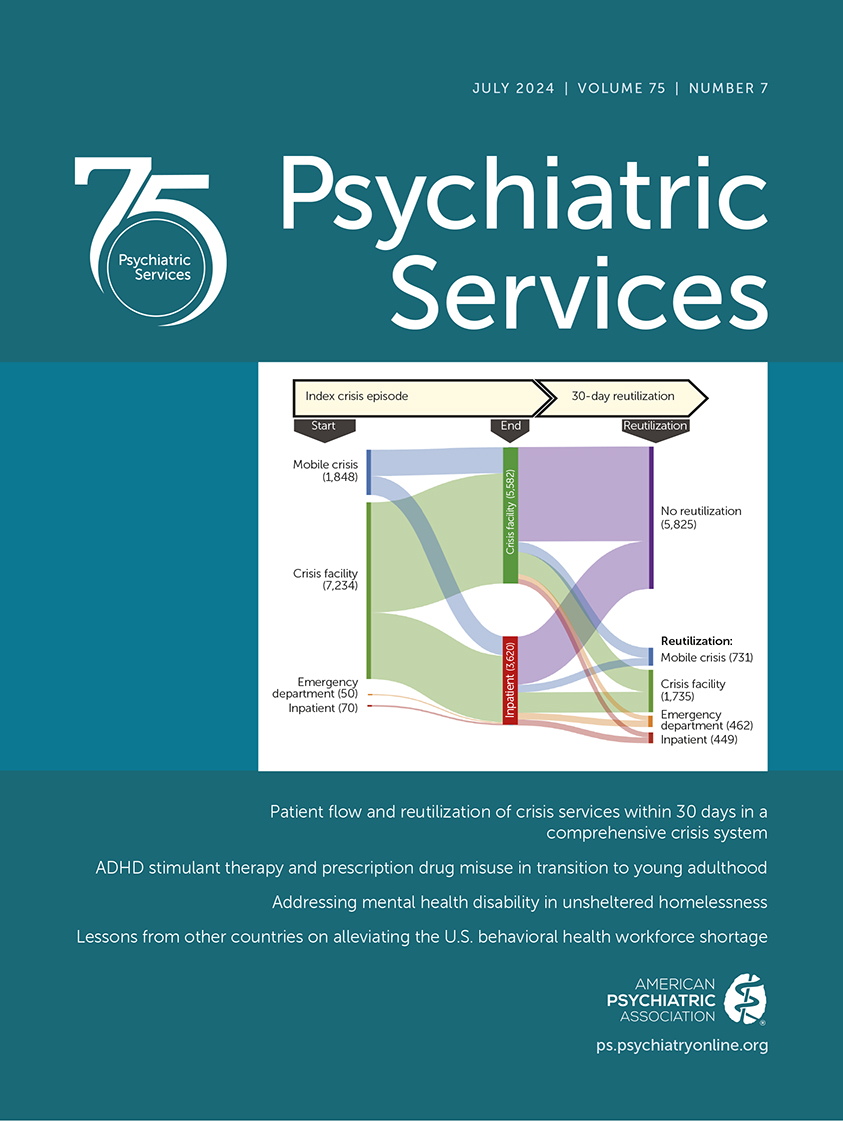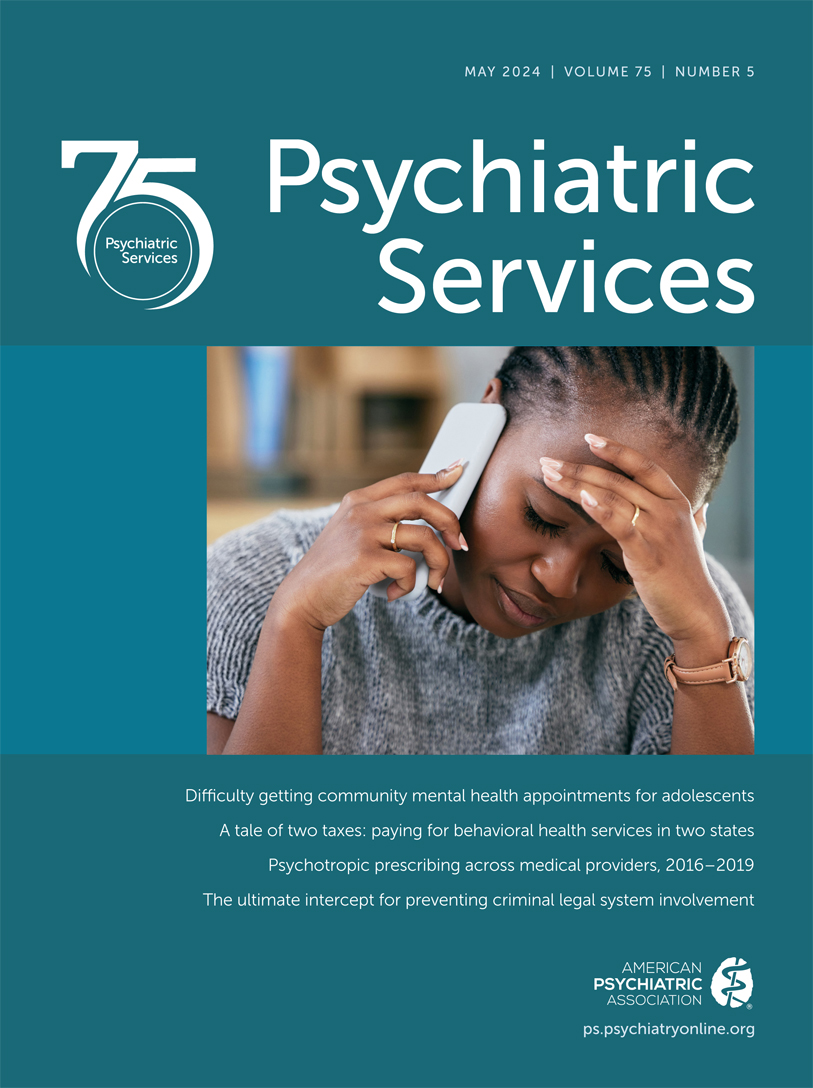Psychiatric Services
- Volume 40
- Number 4
- April 1989
Article
Publication date: 01 April 1989
Pages341–349Dr. Miller's Introduction: We are becoming more and more aware that many alcoholics and chemically dependent individuals also suffer from a psychiatric disorder. This reality emerges now after a period in which the possibility of coexisting mental and ...
https://doi.org/10.1176/ps.40.4.341Publication date: 01 April 1989
Pages356–358Dr. Sbarfstein's Introduction: Prospective payment is the major economic change that is reshaping the delivery of medical care. Capitation financing for the chronic mentally ill is an innovative and promising alternative to underfunded and ...
https://doi.org/10.1176/ps.40.4.356Publication date: 01 April 1989
Pages361–368The burgeoning field of case managementfor long-term psychiatric patients has been handicapped by a lack of conceptual models that delineate the diverse activities of case managers. Based on the actualpractice of case management, the author outlines a ...
https://doi.org/10.1176/ps.40.4.361Publication date: 01 April 1989
Pages369–376Five years of intensive case management and specialized alternatives to hospitalization were provided to 72 young recidivistic, treatment-resistant, chronically thougbt-disorderedpatients. Cornpared with a two-year prestudy baseline, patients' days in the ...
https://doi.org/10.1176/ps.40.4.369Publication date: 01 April 1989
Pages377–382A 50-state survey was conducted to identify the extent of and the factors associated with states' funding of mental health research. Of the 49 states responding, 28 funded mental health research. Funds for research represented about .3 percent of total ...
https://doi.org/10.1176/ps.40.4.377Publication date: 01 April 1989
Pages383–387Twenty-eight of 49 states that responded to a survey supported mental health or substance abuse research through at least one of four funding mechanisms—the joint state-university research unit, research grants, state in-house research, and contracts. The ...
https://doi.org/10.1176/ps.40.4.383Publication date: 01 April 1989
Pages388–392States have funded psychiatric research through a variety of mechanism, including psychiatric research institutes. The authors identified and surveyed 33 such institutes to obtain information on their organizational characteristics. Twenty-nine institutes ...
https://doi.org/10.1176/ps.40.4.388Publication date: 01 April 1989
Pages397–401The rate of compliance with aftercare following hospitalization is disturbingly low despite its proven efficacy in preventing relapse and rehospitalization. This study of 134 emergency admissions to a New York City municipal hospital examined the impact ...
https://doi.org/10.1176/ps.40.4.397Publication date: 01 April 1989
Pages402–406Sociodrama, a synthesis of group psychotherapy and theatrical presentation, was used from 1978 to 1981 to promote rehabilitation of chronic mentally ill patients at Bellevue Mental Hospital in Jamaica. Staff and patients collectively analyzed their ...
https://doi.org/10.1176/ps.40.4.402Publication date: 01 April 1989
Pages407–409Enhancing the clinical utility of medical chart work is a useful goal of quality assurance programs. A series of interventions at this facility demonstrated that medical record requirements can be modified to maximize the record's utility to the clinical ...
https://doi.org/10.1176/ps.40.4.407Publication date: 01 April 1989
Pages415–418As more chronic mental patients are channeled into the community, residential care facilities will become increasingly important in their treatment, and more psychiatrists will become involved in board-and-care work. While traditional psychotherapeutic ...
https://doi.org/10.1176/ps.40.4.415Past Issues
View Issues Archive
Vol. 75 | No. 8

Vol. 75 | No. 7

Vol. 75 | No. 6
